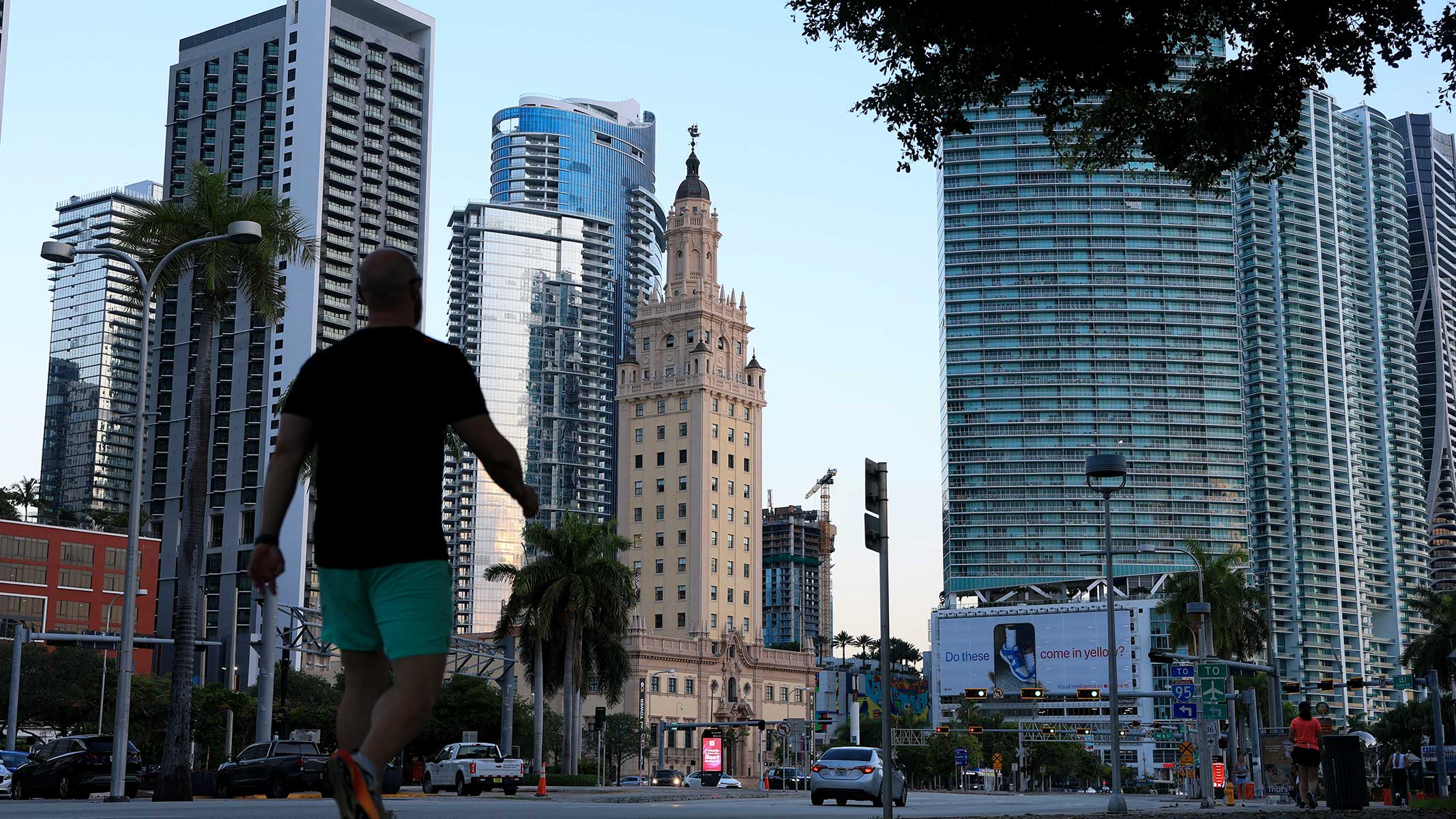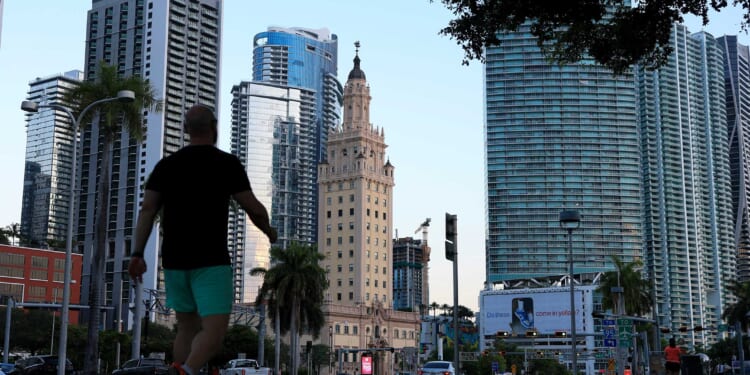
Since Covid, Congress has temporarily expanded federal subsidies to make Obamacare plans free for Americans declaring low incomes. This has caused enrollment to increase nationwide. In Florida’s Miami-Dade County, enrollment has leapt to almost six times the national average.
The surge in sign-ups involves billions of dollars of fraud. Some insurance brokers have systematically misreported enrollees’ incomes, bribed homeless people to sign up, or enrolled others without their knowledge or consent. In Miami-Dade, more supposedly low-income residents are now enrolled in free Obamacare plans than actually live there—despite most already having other health insurance or being ineligible due to their immigration status. As Congress struggles over extending its Covid-era expansion of Obamacare subsidies—an issue central to the ongoing government shutdown—it should curb fraud by requiring all enrollees to contribute meaningfully to their plans’ cost.
Finally, a reason to check your email.
Sign up for our free newsletter today.
The Affordable Care Act of 2010 (ACA, widely known as Obamacare) established federal subsidies for low-income working Americans to purchase health insurance. Initially, enrollment was disappointing and skewed toward sicker enrollees. This prompted the Biden administration to boost subsidies with the passage of the American Rescue Plan Act of 2021 (ARPA).
The Biden administration’s efforts substantially expanded enrollment. In 2025, 22 million Americans received federal aid to purchase ACA plans, compared with 10 million in 2020. Taxpayers now cover 80 percent of the cost of Obamacare plans. The program’s cost surged from $51 billion to $110 billion between 2020 and 2024.
These enrollment gains owed much to ARPA making Obamacare plans completely free for enrollees declaring annual incomes between 100 percent and 150 percent of the federal poverty level ($15,650 to $23,475 for individuals). Previously, such enrollees had to contribute premiums of between 2 percent and 4 percent of their income. People with incomes within that range now make up 49 percent of ACA marketplace consumers, far outstripping their share of the U.S. population.
Free benefits foster fraud, as no one has an incentive to verify claims—except the government, which is spending other people’s money. This was particularly true under the Biden administration, which sought to maximize enrollment in Obamacare plans at any cost.
ARPA has created an incentive for Americans to underreport income to qualify for free health benefits. Nationwide, 7 percent of Americans are enrolled in subsidized ACA plans, and in 49 states, less than 13 percent of the population get subsidies. But, in Florida, 20 percent of the population get this federal aid, with enrollment concentrated in the southern part of the state.
In South Florida, health-care fraud has long been a major industry. In 2024, the Southern District of Florida alone accounted for 65 of 395 U.S. health-care fraud sentences. Author Malcolm Gladwell suggested that the region’s drug traffickers and money launderers have found that the health-care sector offers an even more lucrative return for their skills.
The opportunity to sell free insurance paid for by the federal government has dwarfed prior opportunities for fraud. In May 2025, Florida’s chief financial officer wrote to Congress protesting that ACA subsidies were being entrusted to insurance brokers “based on fraudulently entered information.” While federal law requires enrollees to pay back subsidies if they later declare much higher income on their tax returns, brokers and insurers can keep the revenue resulting from their enrollment.
In 2024, the federal government received over 200,000 complaints from people who found themselves signed up or switched to other Obamacare plans without their permission. Many were enrolled after clicking Facebook ads promising $6,400 cards in return for participating. Similar ads were viewed over 195 million times on YouTube before being taken down.
A class action lawsuit last year alluded to 50 companies (many Florida-based) that allegedly attempted to exploit the availability of free ACA subsidies. One broker that signed up more than 1 million enrollees in 2023 posted a picture of himself shaking Joe Biden’s hand with the caption: “In order to become the 1 percent, you must do what the other 99 percent won’t.”
This February, the Department of Justice charged a South Florida insurance broker with conspiracy to defraud the United States by deceptively marketing plans to claim nearly $162 million in ACA subsidies. The indictment alleges that the man targeted homeless, unemployed, and mentally ill Floridians, bribing them to enroll in Obamacare plans, misreporting their addresses and Social Security numbers, and seeking to maximize their receipt of subsidies. In April, another defendant pled guilty to participating in the scheme.
This was not an isolated incident. One homeless person in Miami, interviewed on the street, reported that she had been paid five times by brokers to sign up for ACA plans.
Since ARPA made free Obamacare plans available, the number of Miami–Dade County residents enrolling in subsidized plans has surged from 441,677 in 2020 to 1,029,331 in 2025. That’s 36 percent of the county’s population—a share almost six times the national average. Of these enrollees, 782,118 declared incomes less than 150 percent of the federal poverty level. That’s a surprisingly large amount, given that the U.S. Census Bureau’s most recent estimate lists Miami-Dade County as having only 669,115 residents with incomes that low.
In fact, most low-income Miami residents are likely entirely ineligible for ACA subsidies, either due to their immigration status or an offer of affordable insurance from another source. The 2023 American Community Survey reports that, of Miami–Dade residents with incomes less than 150 percent of the federal poverty level, 46 percent received Medicaid, 23 percent received Medicare, 12 percent were covered by employer-sponsored insurance, and only 18 percent were uninsured. According to ACS data, 19 percent of Miami residents with income less than 150 percent of the federal poverty line were enrolled in the ACA— still more than the national average of 12 percent, but not a mathematically impossible share of the income cohort exceeding 100 percent.
The discrepancy is likely not entirely due to fraudulent behavior by insurers and brokers. In many cases, individuals simply may have underreported their incomes to qualify for larger subsidies. But this does not explain why Southern Florida’s Obamacare enrollment figures are so out of line with those from the rest of the country.
Nationwide, the Paragon Health Institute estimated that in 2024, excessive ACA subsidies were distributed to 5 million enrollees, at a cost of $20 billion to taxpayers. This ought to prompt reform.
The One Big Beautiful Bill Act tightens oversight of eligibility for ACA subsidies and requires all enrollees to pay back excess subsidies if they subsequently declare higher taxable incomes. But such reforms are unlikely to prevent the government from distributing tens of billions of dollars in free benefits to unqualified recipients, encouraging fraud on an industrial scale.
Whatever their flaws, federally subsidized Obamacare plans are here to stay. But making plans completely free is a needless invitation to fraud. As Congress reconsiders the expansion of subsidies established by ARPA, it should insist that all enrolled contribute at least something to the cost.
Photo by Joe Raedle/Getty Images
Source link


















